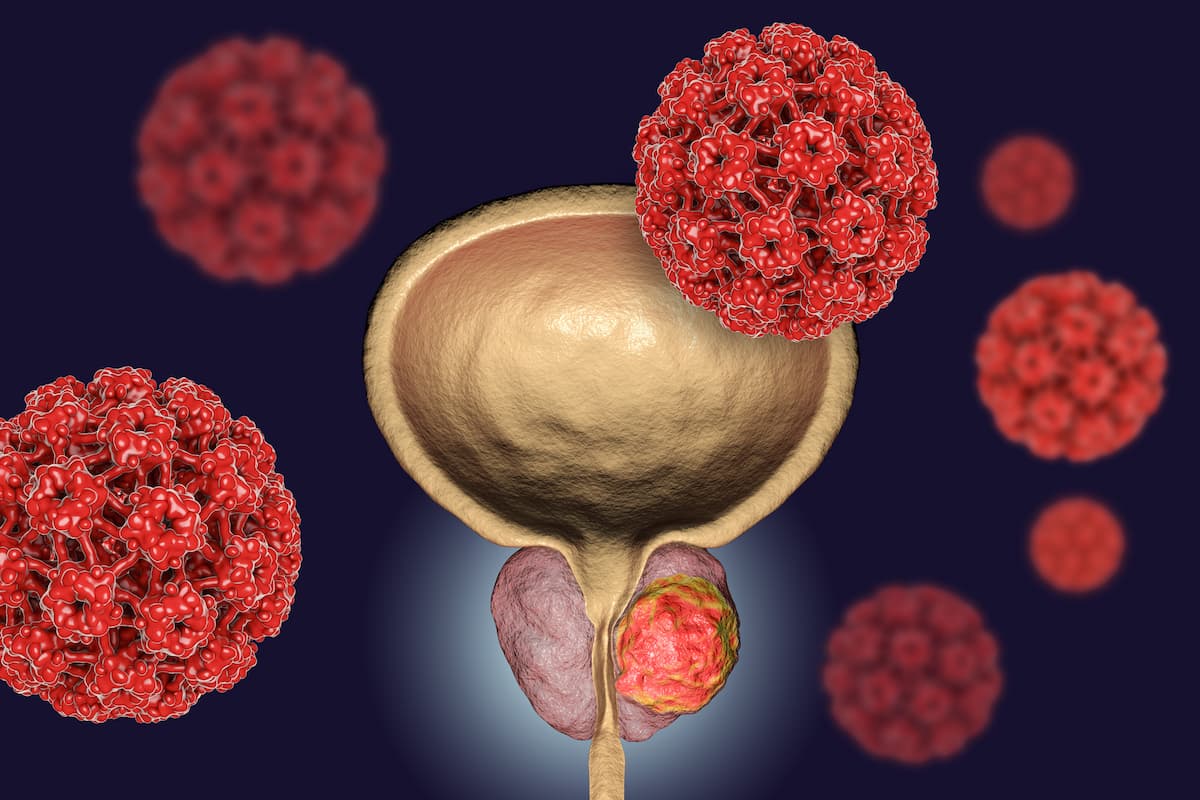Talazoparib/Enzalutamide Combo Prolongs Survival in Metastatic CRPC
Detailed results from the phase 3 TALAPRO-2 trial will be submitted for presentation at a future medical meeting and shared with global health authorities.
“These [OS] results indicate potentially practice-changing efficacy for [talazoparib] in combination with [enzalutamide] for [patients] with metastatic [CRPC],” according to Neeraj Agarwal, MD, FASCO.

Combining talazoparib (Talzenna) with enzalutamide (Xtandi) produced a statistically significant and clinically meaningful overall survival (OS) improvement among patients with metastatic castration-resistant prostate cancer (CRPC), according to a press release on findings from the phase 3 TALAPRO-2 trial (NCT03395197).1
The experimental combination improved OS vs enzalutamide monotherapy among all-comers in cohort 1 and patients in cohort 2, which included those with metastatic CRPC harboring homologous recombination repair (HRR) mutations.
Final analysis findings highlighted clinically meaningful radiographic progression-free survival (rPFS) improvements with the combination therapy across both cohorts, which were consistent with data from the primary analysis previously reported in February 2023.2 Previously, data showed that the median rPFS was not reached with talazoparib/enzalutamide vs 21.9 months with enzalutamide alone (HR, 0.63; 95% CI, 0.51-0.78; P <.001).
The safety profile of talazoparib plus enzalutamide in the TALAPRO-2 trial was comparable with prior reports of each individual agent. Investigators will submit detailed results for presentation at a future medical meeting and share their findings with global health authorities to potentially support updated label indications for talazoparib.
“These [OS] results indicate potentially practice-changing efficacy for [talazoparib] in combination with [enzalutamide] for [patients] with metastatic [CRPC],” lead trial investigator Neeraj Agarwal, MD, FASCO, professor and presidential endowed chair of Cancer Research at Huntsman Cancer Institute of University of Utah, said in the press release.1 “Metastatic [CRPC] is the most advanced and aggressive stage of the disease, and the TALAPRO-2 results provide much-needed hope to patients who remain in high unmet need for effective treatment options.”
The FDA previously approved talazoparib/enzalutamide for patients with HRR-mutated metastatic CRPC in June 2023.3 Supporting findings for the approval came from the TALAPRO-2 trial.
Topline results showed that the median rPFS among patients with HRR-mutated disease was not reached with talazoparib/enzalutamide vs 13.8 months with enzalutamide monotherapy (HR, 0.45; 95% CI, 0.33-0.61; P <.0001). According to the exploratory analysis data based on BRCA mutation status, the rPFS HR was 0.20 (95% CI, 0.11-0.36) among those with BRCA-mutated disease and 0.72 (95% CI, 0.49-1.07) among those with non–BRCA-mutated disease.
Common adverse effects in the trial included decreased neutrophil counts, decreased lymphocytes, fatigue, decreased calcium, nausea, decreased appetite, and decreased sodium.
In the double-blind, multi-center TALAPRO-2 trial, 1035 patients with metastatic CRPC were assigned to receive enzalutamide at 160 mg per day with or without talazoparib at 0.5 mg per day. The study population included 805 of those who were all-comers and 399 patients who had HRR-mutated disease.
The trial’s primary end point was rPFS, which investigators defined as the point from randomization to the occurrence of radiographic progression or death, in cohort 1 and cohort 2. Secondary end points included OS, objective response rate, duration of response, and prostate-specific antigen response.
Patients 18 years and older with histologically or cytologically confirmed adenocarcinoma of the prostate without small cell or signet cell features and asymptomatic or mildly symptomatic metastatic CRPC were eligible for enrollment on the trial.4 Other eligibility criteria included having an ECOG performance status of 0 or 1, a minimum life expectancy of 12 months per investigator assessment, and metastatic disease in bone as determined via bone scan or in soft tissue per CT/MRI scan.
“The TALAPRO-2 results showed that [talazoparib] plus [enzalutamide] is the first and only PARP inhibitor in combination with an [androgen receptor pathway inhibitor] to significantly improve survival in patients with metastatic [CRPC], regardless of mutation status,” Roger Dansey, MD, chief development officer of Oncology at Pfizer, the developer of talazoparib, concluded.1
References
- Pfizer’s TALZENNA® in combination with XTANDI® prolongs overall survival in phase 3 TALAPRO-2 trial. News release. Pfizer. October 10, 2024. Accessed October 10, 2024. https://tinyurl.com/2p9p98he
- Pfizer announces positive TALZENNA® and XTANDI® combination data from phase 3 TALAPRO-2 study. News release. Pfizer. February 16, 2023. Accessed October 10, 2024. https://tinyurl.com/3xddydv5
- FDA approves talazoparib with enzalutamide for HRR gene-mutated metastatic castration-resistant prostate cancer. News release. FDA. June 20, 2023. Accessed October 10, 2024. https://bit.ly/3pcuSTH
- Talazoparib + enzalutamide vs. enzalutamide monotherapy in mCRPC (TALAPRO-2). ClinicalTrials.gov. Updated September 5, 2024. Accessed October 10, 2024. https://tinyurl.com/39znc28d
Prolaris in Practice: Guiding ADT Benefits, Clinical Application, and Expert Insights From ACRO 2025
April 15th 2025Steven E. Finkelstein, MD, DABR, FACRO discuses how Prolaris distinguishes itself from other genomic biomarker platforms by providing uniquely actionable clinical information that quantifies the absolute benefit of androgen deprivation therapy when added to radiation therapy, offering clinicians a more precise tool for personalizing prostate cancer treatment strategies.